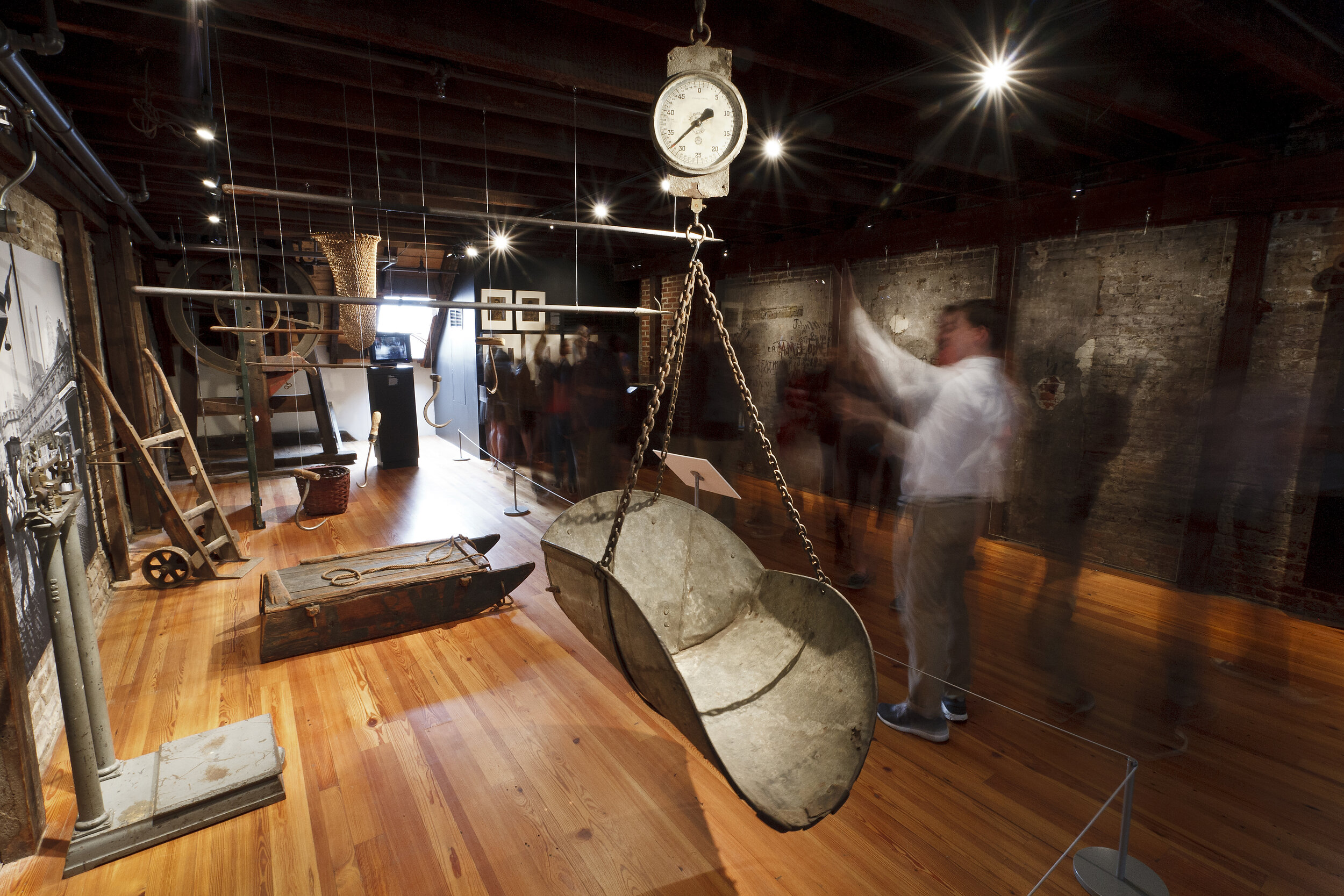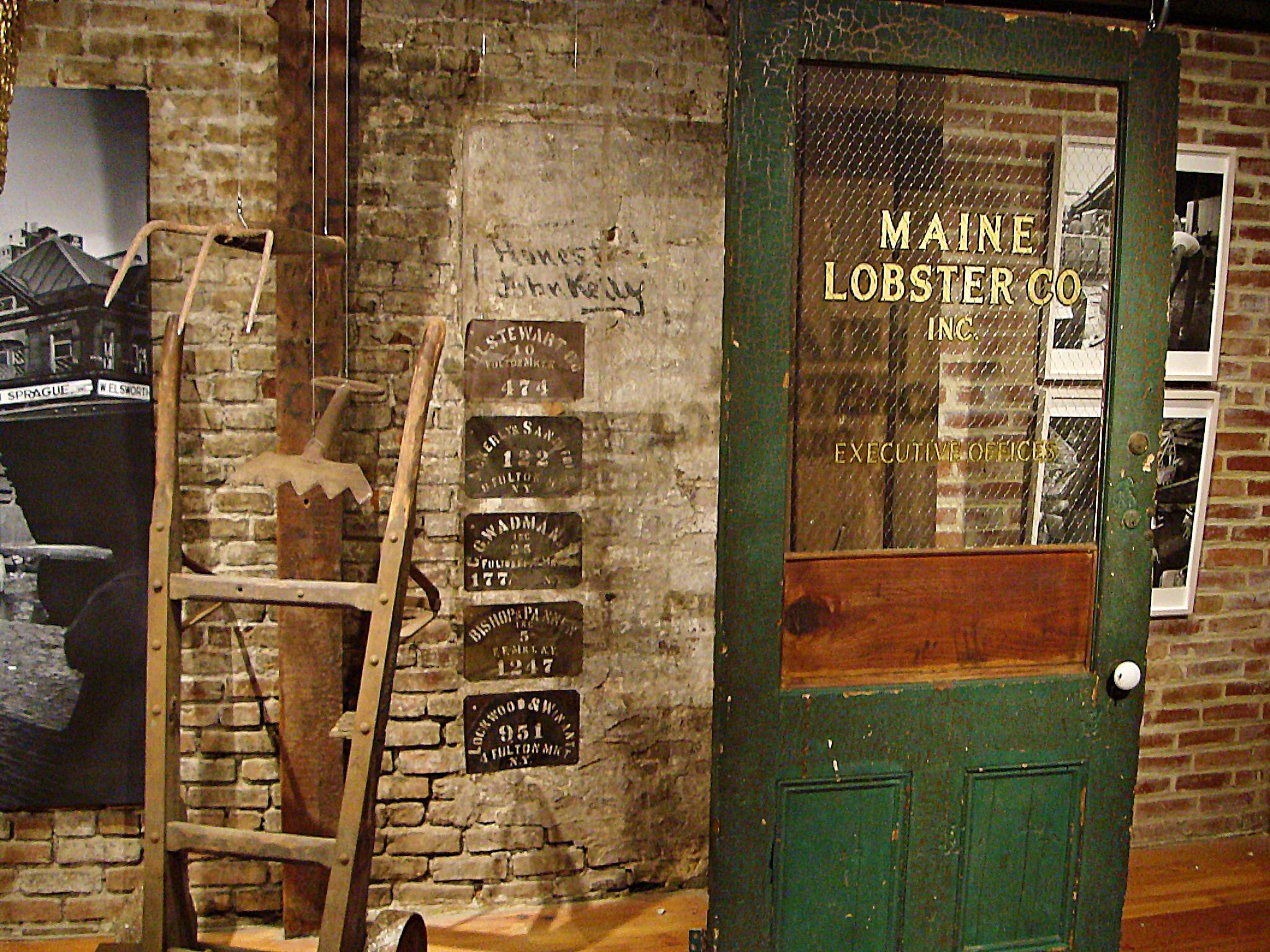
Museum of the City of New York at the South Street Seaport Museum
Museum of the City of New York, 2012
Museum of the City of New York at the South Street Seaport Museum
“Just when I thought I was out, they pull me back in!”
--Michael Corleone, The Godfather Part III
I’ve actually worked for the South Street Seaport Museum three separate times. The latest was in 2012, when the Museum of the City of New York temporarily assumed direction at South Street. I was one of several co-curators involved in creating the exhibition that showcased South Street’s varied collections and one of its priceless resources, the Schermerhorn Row buildings, built in 1810-1812 and filled with layer upon layer of lower Manhattan’s history.
My portion of the exhibition tied the Row’s and the Seaport District’s past to artifacts embodying the daily lives of generations of coffee and tea merchants, fish market workers, burlap bag vendors, merchant seamen, and tattoo artists on the New York waterfront. The installation included the wonderful Fulton Fish Market, a short film by Bob Sacha. Designed by Pure + Applied and Studio Joseph.
Fulton Fish Market, a short film by Bob Sacha











